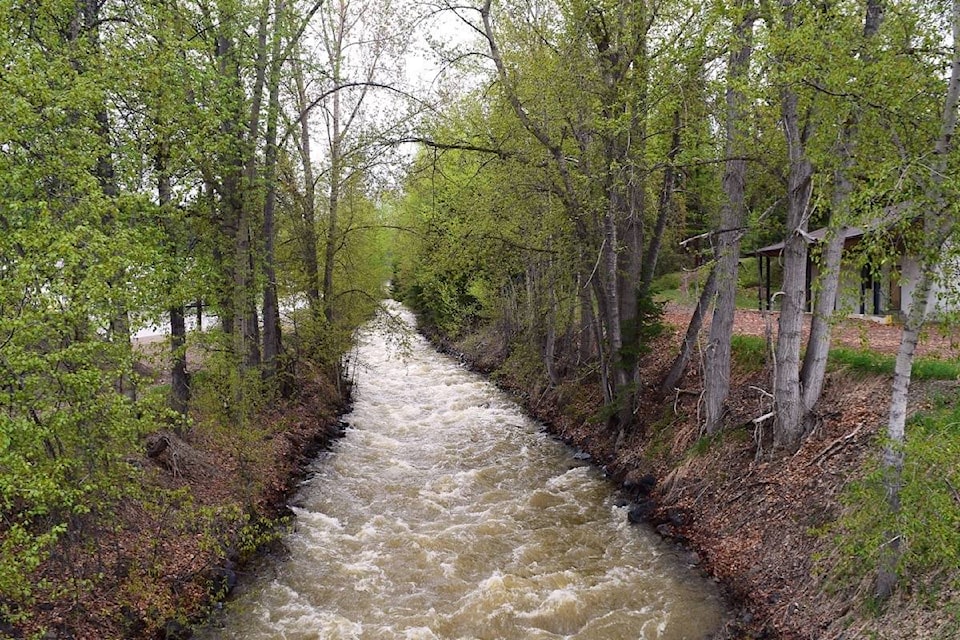In a recent presentation to Kimberley City Council, Consultant Robert Gray explained that Kimberley is part of large research project that aims to increase resilience to wildfire, specifically in Kimberley’s Watersheds.
On Monday, September 9, 2019 Gray gave a presentation on ‘Building Resilience to Wildfire in Kimberley’s Municipal Watersheds’.
READ MORE: City wants baseline assessment of watersheds
He said that research on the past and future of fire risk in south eastern B.C. is being conducted by him and a team in the Okanagan along with the Ministry of Forests, Lands, Natural Resource Operations and Rural Development, the Regional Districts and the Ktunaxa Nation.
They have started assessing costs and looking into the grants that are available for this work. He adds that they are working with the City to determine the risks, thin out material and “get stuff moving” in the Mark Creek and Matthew Creek watersheds. Part of that is applying to a new grant through the Columbia Basin Trust called the Wildfire Innovation Grant.
He explained that research to guide future management includes:
- How to model wildfire threat to watershed values
- How to mitigate that threat, recognizing not all fires will be able to be prevented
- What tools are most effective? At what scale and intensity?
- How to construct trade-off analysis in watersheds where there are competing values and multiple natural disturbance threats
- How to address wildfire threat to watersheds within the constraints of existing forest policy and funding programs
The project is expected to last two to three years, at which point, Gray says, all of the stakeholders will come together and ask, “what’s going to have to give?”
Gray says that wildfire risk stems from climate change and rising temperatures.
“Western Canada has the highest temperature growth globally,” said Gray. “Predictions show an increase in precipitation [in the future], but through stonger convective storms. It’s also getting hotter and drier both during the day and at night, especially compared to 30 or 40 years ago. That dry, cold front is what grows fires. For example, that’s why the Meachen Creek fire grew, it picks it up and moves it. We’re going to see higher incidence of strong wind events and longer fire seasons.”
He adds that in Canada, the spring fire season is expected to grow more than the fall season.
READ MORE: Kimberley to receive CBT Community Wildfire Education grant
Council discussed the plans for wildfire resilience research after Gray gave his presentation.
Councillor Darryl Oakley asked how far back researchers will be able to go in terms of looking at Kimberley’s history of the watersheds.
“The earliest topographical photos we have are from the 30’s and 40’s so we might be able to glean some history from those,” replied Gray. “The earliest timbre inventory dates back to 1910 and 1920. Also, we can look at cultural activity from the Ktunaxa Nation and piece together what those areas looked like.”
Councillor Jason McBain asked what tools are available to restore the watersheds back to a more resilient state.
“Whatever we do, we need fuel off of the ground,” said Gray. “We need to get rid of fuels and plant or keep anything that yields a very short flame length or creates a fire break. Aspen [trees] and shrubby plants are ideal. We need to clean up that forest floor as best we can.
“The precipitation this summer has helped, but drought will continue to be an issue. Density becomes the key thing; taller trees, grown farther apart. Weakened trees need to go as well, because they become susceptible to invasive insects.”
Mayor Don McCormick says that this is a large project, but he’s glad things are starting to move forward.
“This is not a short term process,” he said. “But you have to start somewhere.”
corey.bullock@kimberleybulletin.com
Like us on Facebook and follow us on Twitter
